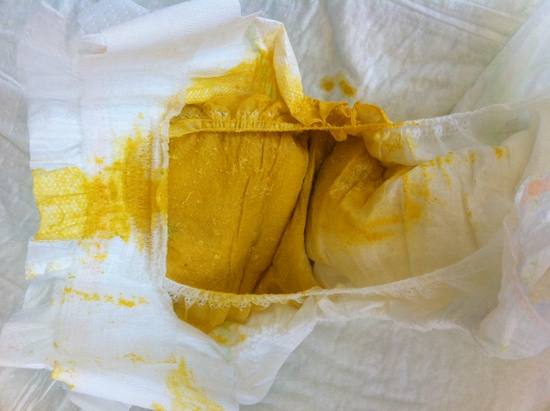

What does diarrhea look like in newborns, and why does it appear, all young parents want to know, because it seems strange to them that in babies, unlike adults, the appearance of loose stools is regular. It is worth remembering that for infants this phenomenon in most cases is absolutely normal, not requiring treatment. This happens because the child eats liquid food - milk and mixtures, therefore, his normal stool should also have such a consistency.
The appearance of solid feces for the baby is an anomalous phenomenon. The development of diarrhea in newborns may be indicated by the appearance of pathological inclusions in the feces, fever and pain. This is what suggests that the baby's diarrhea has taken on an abnormal character. You should also carefully monitor that meconium, a black-green stool, comes out during the first 24 hours. If this does not happen, then the infant may have such an anomaly as intestinal atresia.
Very often, parents, especially if they have their first child, ask why the newborn has loose stools. The main causes of diarrhea in newly born babies who are fed naturally are errors in the mother's diet. Her diet always leads to deviations in the nature of the bowel movements. In artificers, the work of the immature gastrointestinal tract depends on the mixture used for feeding.
The question is often asked about what the normal bowel movements of newborns look like, and how to determine that they develop pathological diarrhea? Mucus in the feces and a change in their color are not a 100% sign of an intestinal infection. Abdominal pain and flatulence also may not always indicate the appearance of diarrhea in infants. In the case when it comes to an upset stomach of a newborn caused by malnutrition, pediatricians recommend adjusting the mother's diet and giving bifidus drugs to children in order to avoid the development of diarrhea.
 Watery bowel movements in babies is a problem that has a number of features. The fact is that in infants, loose stools are not always a sign of diarrhea. Most often, this is an absolutely normal phenomenon that does not require any treatment. Some parents, out of ignorance, with such manifestations, state diarrhea in an infant and try to apply therapeutic measures. This approach is not always safe.
Watery bowel movements in babies is a problem that has a number of features. The fact is that in infants, loose stools are not always a sign of diarrhea. Most often, this is an absolutely normal phenomenon that does not require any treatment. Some parents, out of ignorance, with such manifestations, state diarrhea in an infant and try to apply therapeutic measures. This approach is not always safe.
In general, a different from the norm and very loose stool in an infant is an alarming sign that indicates a beginning, even if due to diet, indigestion and intestinal dysfunction. After all, useful substances are taken out with diarrhea and are not absorbed properly, and, therefore, a newborn child does not receive them during diarrhea. But there are cases when watery bowel movements in an infant means the presence of poisoning, infection, or even intussusception of the intestine. Since this is very dangerous and requires the intervention of a doctor, parents are interested in how such diarrhea looks like in a newborn? It is not always possible for the mother herself to determine “by eye” why the baby has very frequent and pathological inclusions of watery feces. Therefore, it is worth understanding its main features. In the event that pathological diarrhea develops in newborns, the symptoms will be as follows:
The presence of two or more signs indicates that it is urgent to show the child to the doctor, since in these cases the diarrhea that has appeared in the newborn requires specific treatment, which should be prescribed only by a specialist based on the results of the tests and visual examination of the baby.
 Diarrhea in newborns Komarovsky, a famous pediatrician and host of the eponymous program on the health of babies, considers it a factor that indicates that a newly born baby had a violation of digestive functions. The appearance of symptoms of indigestion, according to the doctor, can be associated with both pathogenic and natural physiological factors. Komarovsky is often asked about what the feces of a newborn look like with diarrhea. According to his answers, one can judge that in addition to the appearance of additional negative inclusions in them, they become very watery, change color and acquire a fetid odor. To the question of why pathological intestinal dysfunction is possible in newly born babies and how to correctly identify their main signs, Komarovsky gives some advice:
Diarrhea in newborns Komarovsky, a famous pediatrician and host of the eponymous program on the health of babies, considers it a factor that indicates that a newly born baby had a violation of digestive functions. The appearance of symptoms of indigestion, according to the doctor, can be associated with both pathogenic and natural physiological factors. Komarovsky is often asked about what the feces of a newborn look like with diarrhea. According to his answers, one can judge that in addition to the appearance of additional negative inclusions in them, they become very watery, change color and acquire a fetid odor. To the question of why pathological intestinal dysfunction is possible in newly born babies and how to correctly identify their main signs, Komarovsky gives some advice:
Diarrhea caused by an intestinal infection in newborns is not subject to specific treatment, especially if it looks like loose stools yellow color without pathological inclusions. In this case, it is a protective reaction of the child's body to a pathological agent. Only with the help of watery stools can the gastrointestinal tract of an infant be cleansed of toxins and poisons. The main thing in this case is to replenish the fluid in the baby's body, which will not allow dehydration to develop.
Whatever the baby's stool is - watery or like gruel, yellow or greenish, with or without a pungent odor, all this is within the normal range. How often your baby poops, and how the stool will be, depends on many factors, including age, diet, the presence of diseases, and heredity. In general, a sign of health is the general well-being of the baby, and not his feces.
What kind of chair should a baby have? Yellow, orange, light brown, yellow green, green, and dark green stools are normal. Why does the color of feces change?
green stool in baby breastfeeding The usual thing. But taking certain drugs, in particular activated charcoal, dyes, iron and antibiotics, can provoke black feces. Although this is not a cause for concern, with good health crumbs.
More green stool in the baby artificial feeding, the color becomes saturated, the same can be observed after the introduction of complementary foods. The reason is in physiology, the content of bile increases markedly. Orange color indicates poor absorption of breast milk. Also, orange or brown stools are a reaction to bilirubin, physiological jaundice in infants in the first month of life, usually does not require treatment and goes away on its own.
White feces should alert, this is one of the symptoms of hepatitis. Although it is extremely rare in infants, the prognosis for the disease is very poor. A slight lightening is observed with dysbacteriosis and teething.
A change in the color of the stool usually does not mean that serious disorders have occurred in the digestive system, it's all about the type of food.
Consistency of feces
Foamy, liquid, watery stools in infants are quite normal, this continues until about the moment when the baby is one year old. But you should know how to distinguish loose stools from real diarrhea:
Green or yellow liquid stools in infants, with mucus or foam, sometimes mean nothing. If your baby sleeps well at the same time, he has a great appetite, he is active, there is no reason to worry. You need to consult a doctor if the baby is naughty, he accumulates gases, has arisen, there is a violation of sleep and appetite, the body temperature is elevated.
A chair in a baby from the moment of birth, at 2 months, at half a year, up to a year, can have various impurities and a heterogeneous consistency.
The presence of white lumps in the stool indicates that the baby is overeating, this is curdled, undigested milk. After the start of complementary foods, lumps may be fiber particles that the digestive system could not cope with.
A little mucus in the feces of the baby is considered the norm, but its sharp increase indicates the development of an inflammatory process. There are many reasons for the appearance of mucus:
Foam in the feces is not a sign of a disease or pathology, the reason for this is colic, accumulation of gases, food allergies. The abundance of foam indicates dysbacteriosis and intestinal infections.
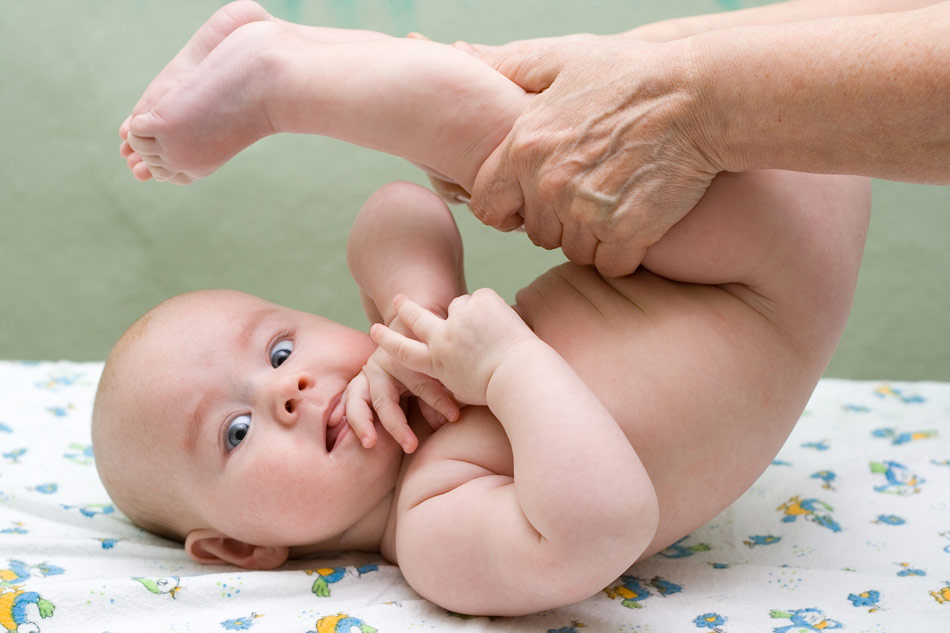
Seeing a doctor requires the presence of blood in the stool. Causes of blood streaks in the stool:
In no case should a doctor's call be postponed if the newborn has a fever, loses weight, and has no appetite.
Feces in a newborn in the first day is called mecconia. Mecconia is a viscous, sticky, black-green mass accumulated during the time the baby was in the womb. Washing off the mecconia is very difficult, and it will come out for several days. If two days have passed, and the mecconia has not appeared, this is a sign of pathology. Most often, with Hirschsprung's disease, part of the intestine does not contract, the feces move with great difficulty.
Liquid, greenish stools in infants during breastfeeding in the first days of life are natural. Only by the fifth day does a mustard-colored mushy stool appear. Do not be afraid if it has a sour smell, the food is dairy. But foam and excessive wateriness indicates a lack of lactose and dysbacteriosis. Sometimes loose stools are the reason that you do not attach the baby to the breast for long enough and are not in a hurry to change breasts.

The entire first month of life, the baby will poop every time he eats. From two months - 4 times a day. With a pause in bowel movements for one or two days, you do not need to worry, pediatricians call this an enzyme crisis, this can last for a single week, this is not considered constipation if the baby behaves as usual.
Feces during artificial feeding
The stool during artificial feeding may have a different color - yellow, brown, slightly yellowish. Green feces appear when switching to another type of mixture or starting to introduce complementary foods. The consistency of feces in children on artificial feeding is denser, and the smell is pronounced and sharp.
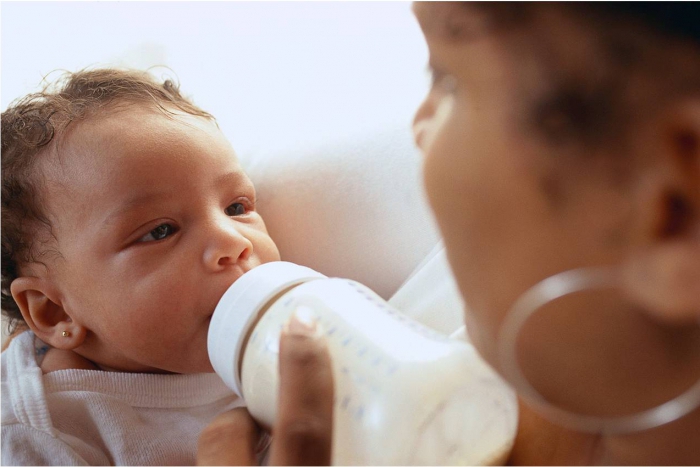
"Artists" poop twice as rarely as those babies who eat mother's milk. But constipation occurs more often, a delay of a day in this case is a signal that the stool has become irregular.
Summing up - the stool in the baby should be regular, soft, the defecation process is painless. The abundance of foam, mucus, streaks of blood requires a visit to a doctor.
And here is what Dr. Komarovsky says about the baby's stool.
Baby chair - Komarovsky
What is constipation? It is difficult, irregular, or incomplete bowel movements. Constipation in children under one year old happens quite often, which brings suffering to the baby and his parents. The main ones are rare bowel movements, hard stools, the presence of blood in the stool, or the child's unsuccessful attempts to poop.
The occurrence of such problems with bowel movements should definitely lead parents to the idea of visiting a pediatrician. If there is blood in the stool, you should seek professional medical help immediately and call an ambulance!
Each newborn is completely individual and unique. It has unique features and needs. Often, constipation in a baby is a fictional problem that his parents and grandmothers invent. Many are firmly convinced that the normal emptying of the intestines of a child must necessarily occur at least once a day. Here is what the famous doctor Komarovsky, who became famous for his new scientific approach to the treatment of children and the rejection of the "Soviet" established medical methods, says about this. “Someone came up with the idea that a child should poop every day! But! If he is breastfed and rarely empties, then this only means that his mother's milk is ideal for him and is almost completely absorbed. The same goes for formula-fed babies. Rare stools may indicate that the formula is ideal for the baby.
If the child, with a rare emptying of the intestine, feels bad, does not gain weight, refuses to feed and often cries, then it is necessary to attend an appointment with the local pediatrician. He will be able to accurately determine the presence and cause of constipation in infants, as well as prescribe the correct treatment. It is not necessary to treat the child on your own, especially to massage the baby's anus with laundry soap, a thermometer and similar "tools". Komarovsky speaks extremely negatively about this kind of treatment. The doctor claims that such methods can only worsen the condition of the newborn, injure the intestines and cause the baby to get used to the “mechanical” effect. Only an experienced pediatrician, after examining the baby, will be able to find out the cause of poor emptying of his intestines.According to Komarovsky, in this matter it is worth paying attention only to the condition of the baby himself, and not to the contents of the diaper. The well-being of the baby and sufficient weight gain indicates that the process of digestion and emptying is optimally adjusted. In this case, you should not do anything, worry in vain and try to force him to perform an act of defecation. You should not torment yourself and your child, run around all the doctors, read books and articles about constipation, watch various videos on this topic.
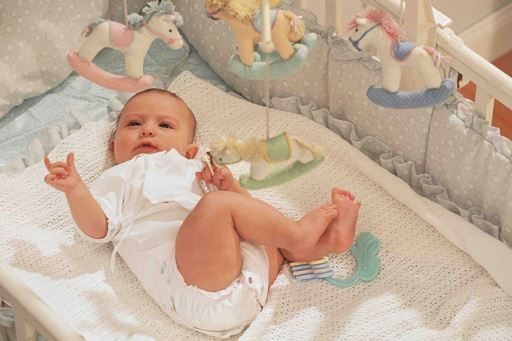
The main reasons for poor emptying of the baby's body Komarovsky calls the lack of moisture and potassium in the child's body. With dehydration, dry stools and inefficient bowel function are observed, which leads to difficult emptying. The lack of potassium in the body of babies up to a year of life, in turn, adversely affects the proper functioning of intestinal motility. This leads to weak contractions of the colon, which makes the act of defecation quite difficult for the child.
There are two types of constipation in children of the first year of life:
Based on the duration, constipation is also divided into two types:
What does a famous doctor recommend to combat this disease in young children? How to treat, what to do and how to avoid these "difficult" days? In his video program “Dr.
Avoid dehydration of the child's body in every possible way! Dry and fever environment has a direct effect on his stool. It is necessary to regularly monitor the humidity parameters in the room, ventilate it and do wet cleaning. Don't over wrap your baby in a large number of clothes and let him air-bath naked more often. Also, regular walks in the fresh air, do morning exercises with it positively affect the health of the chair.
When the baby reaches a certain age, he is supposed to introduce complementary foods of “adult” food, and at the same time, mandatory supplementation!
According to Komarovsky, the usual boiled water is not suitable for these purposes! It contains a negligible amount of useful minerals, so it must be replaced with a more useful liquid. An ideal option would be a decoction of raisins, which will have a much more beneficial effect on the overall health of the child's body. You can do it in a thermos, filling the raisins with boiling water.
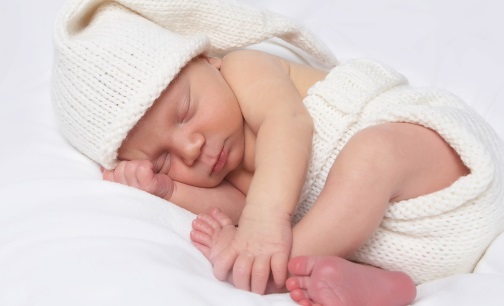
Also, Komarovsky insists on sufficient potassium intake for the formation of a normal baby stool. The lack of this element in the body adversely affects the functioning of the intestines. Potassium is found in high abundance in foods such as raisins, figs and prunes. Compotes and decoctions from them will help babies easily cope with emptying their intestines. The doctor often compares potassium to gasoline for cars, without which nothing can be done.
Komarovsky considers lactulose syrup to be the safest treatment for children for constipation, which is sold in absolutely any pharmacies without a doctor's prescription. There are several commercial firms involved in the production of these drugs. Therefore, lactulose syrup can be found under the name "Duphalac", "Lazilac", "Normaza" and others. The doctor advises taking this medication in stages, starting with 2 ml and gradually increasing to 5 ml. In the first days of taking lactulose syrup, the baby may develop excessive gas formation, which will surely pass with time.
In cases where a child has cracks in the anus and colon, Komarovsky suggests using safe suppositories with glycerin or sea buckthorn oil. Pain during bowel movements will gradually disappear.
Komarovsky strongly recommends observing sanitary conditions in the baby's toilet so as not to set him up psychologically against the emptying process itself. It is necessary to try to accustom the child to do this act at a certain time and in appropriate conditions. Then the child should not have any special problems!
You will be able to watch the video yourself and find out what else Dr. Komarovsky talks about when discussing such a delicate problem in infants.
Any mother, even a balanced and sane one herself, must observe the contents of her baby's diaper, notice changes in feces and draw conclusions about his health. Green feces in a baby can be completely normal, and talk about problems or the onset of a disease. It is important to be able to distinguish between these situations.
In the first week of life, the green color of feces in newborns is the norm. For the first few days, meconium comes out of it - a dark green original feces, consisting of the fact that the baby swallowed his mother in the stomach. Then, until the colostrum has been replaced by permanent milk, the first restructuring and adaptation of the stomach and intestines to nutrition occurs, as a result of which you can also see greens in the stool. And only by the end of the first week, most newborns begin to defecate such yellow homogeneous masses that are pleasant to the mother's eye.
Before the age of six months, until the baby begins to introduce complementary foods, his feces can acquire a green tint for a number of reasons. In children with breast and artificial feeding, they may differ.
The color, texture and frequency of bowel movements in breastfed babies can change constantly, as the composition of mother's milk is constantly changing. The green color can be provoked by female hormones, as well as vegetables, cow's milk, medicines, any foods and drinks unfamiliar to the child that the woman ate or drank. If green feces are sometimes observed during breastfeeding, these are most likely changes in the mother's diet. In this case, in addition to color, neither the mood nor the well-being of the baby changes, and the color of the stool is restored in a day or two.
The additional presence of foamy secretions in the diaper (mucus is also possible) may indicate that the child receives a lot of foremilk (watery and poor in nutrients) and little hindmilk (thick and containing lactose, which helps to cope with milk proteins).
In addition, it is the back milk that gives the stool a mustard tint. You can solve this problem if you keep the baby at one breast longer, and do not alternate breasts in one feeding. In difficult cases, if a child is diagnosed with lactase deficiency, the doctor will prescribe enzymes that will need to be added to breast milk and given to the baby at the beginning of feeding.
Abundant foamy discharge may indicate a food allergy. Green frothy stools and fever are dangerous signs of the presence of various cocci in the body.
Green feces with mucus in infants, provided that there is little mucus, should also not cause great concern. Changes can occur even due to the addition of water to the child. The gastrointestinal tract continues to improve, and even a slight dysbacteriosis does not cause any concern around the world (they simply do not know about such a diagnosis). If there is a lot of mucus, the feces have a sharp unpleasant odor, it is noticeable that the child has a stomachache, you need to see a doctor.
Sometimes green stool happens when the baby is malnourished. You can understand whether this is so by observing the weight of the baby.
Doctor speaks! Dr. Komarovsky believes that the child who is being fed breast milk, feces can be practically anything - yellow, green, with grains, with mucus, with foam, frequent and even very rare, all this is the norm. If at the same time the baby feels good and does not lose weight, you can not worry.
When feeding with a mixture that has a constant composition, the stool also changes less often. Greenish stools may be a reaction to the content in baby food gland. And dark green stools most often indicate that this mixture is not suitable for the baby. If you suspect dysbacteriosis (diarrhea or constipation, colic), it is useful to switch to infant formulas with prebiotics and probiotics.
The danger signs with which green stools can be combined are the same for infants and formula-fed babies:
Those nasty companions green stool they talk about infection, poisoning, allergies, SARS, or even intestinal pathologies that require surgical intervention. If you notice them, you should immediately contact your doctor.
Important! If the child has diarrhea (frequent liquid bowel movements and pain in the tummy), the mother needs to prevent dehydration of the child's body, even if she has already called the "ambulance". This will help sorbents - atoxyl and smecta, plenty of drink - rehydron, children's teas from chamomile, sage, anise, fennel, water, as well as frequent attachment to the chest.
Understanding why a child has a green stool is sometimes difficult even for specialists. It is also considered normal for both groups of children when:
Having studied the features of the work of the children's intestines in the first year of life, one can understand that the green stool in a child still does not mean anything and should not cause concern if the baby feels good. In combination with other symptoms, greenish stool gives a signal of problems. To deal with them, it is better to entrust a specialist.